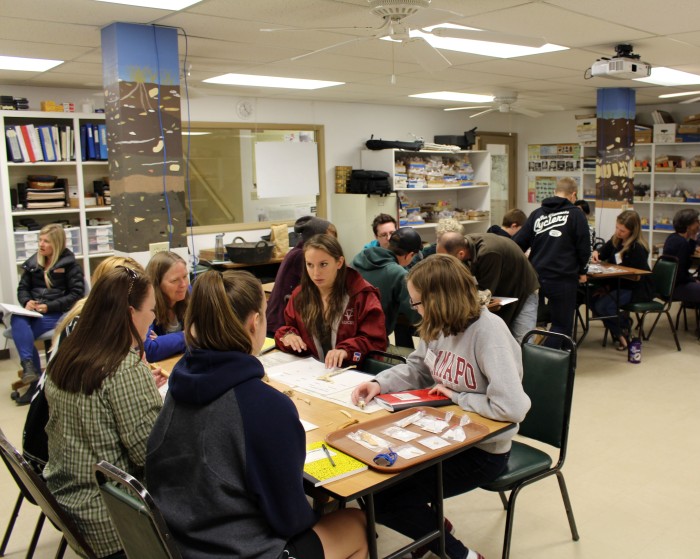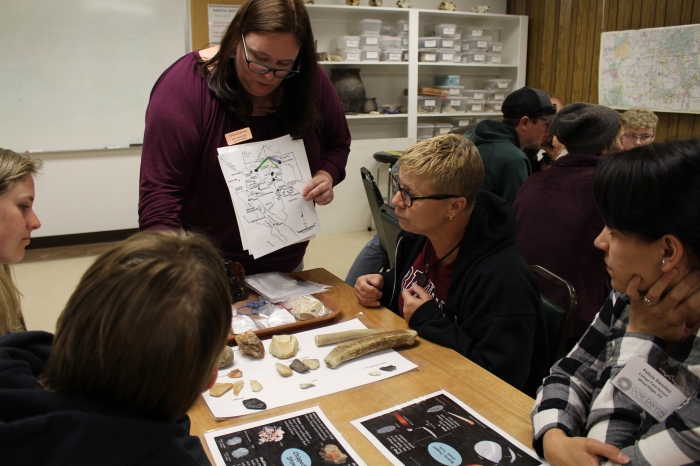May 24, 2016
Today field school participants learned to conduct a pedestrian survey and map an archaeological site at Shields Pueblo (part of the Goodman Point Community). Our first exercise was to note the number of steps each of us took in a ten meter stretch in order to estimate how to draw a map to scale (more-or-less). We marked off the boundaries of the site, then each group established a datum, or reference point. One student held the tape measure, another walked out to the pin flags and a third person noted the measurements and drew points on graph paper. As the measurements were called out and recorded, a rough bird’s-eye view of the site began to take shape. This exercise made us aware of the inaccuracies that can occur using this informal method of map making, but everyone agreed this is a viable way to map a site in a pinch.
Next we learned to make a more accurate map using a compass and protractor along with the tape measure. Crow Canyon archaeologist, Grant Coffey, patiently demonstrated the procedure for measuring angles using a compass. Remember, “the red car goes in the red garage!” He explained how to account for declination so that the map is situated to true north. These maps were a more accurate depiction of the site.
All that surveying and mapping accompanied by a stiff southerly wind whet our appetites. We are grateful to the cooks who provided us with a variety of meats and cheeses for sandwiches, along with veggies, potato chips, fruit and cookies. A new field school student joined us today, bringing our group to a grand total of 20 future archaeologists.
After wrapping up our mapping activities we ventured to Sand Canyon Pueblo, a late Pueblo III period site located in Canyon of the Ancients National Monument. This site is notable for its size, horseshoe-shaped layout, and unique architectural features including a D-shaped structure. Was this an attempt to revitalizeChaco? A new way of building public spaces? Does it indicate a change in social organization? These are questions we will continue to ponder as we walk in the footsteps and explore the built environment of the ancestral Pueblo people who inhabited this beautiful region thousands of years ago.



 Field school students sorting faunal artifacts in the lab.
Field school students sorting faunal artifacts in the lab. Sorting ground stone artifacts.
Sorting ground stone artifacts. Dr. Kari Schleher, lab manager, discusses obsidian/volcanic sources while students sort stone tool artifacts.
Dr. Kari Schleher, lab manager, discusses obsidian/volcanic sources while students sort stone tool artifacts.